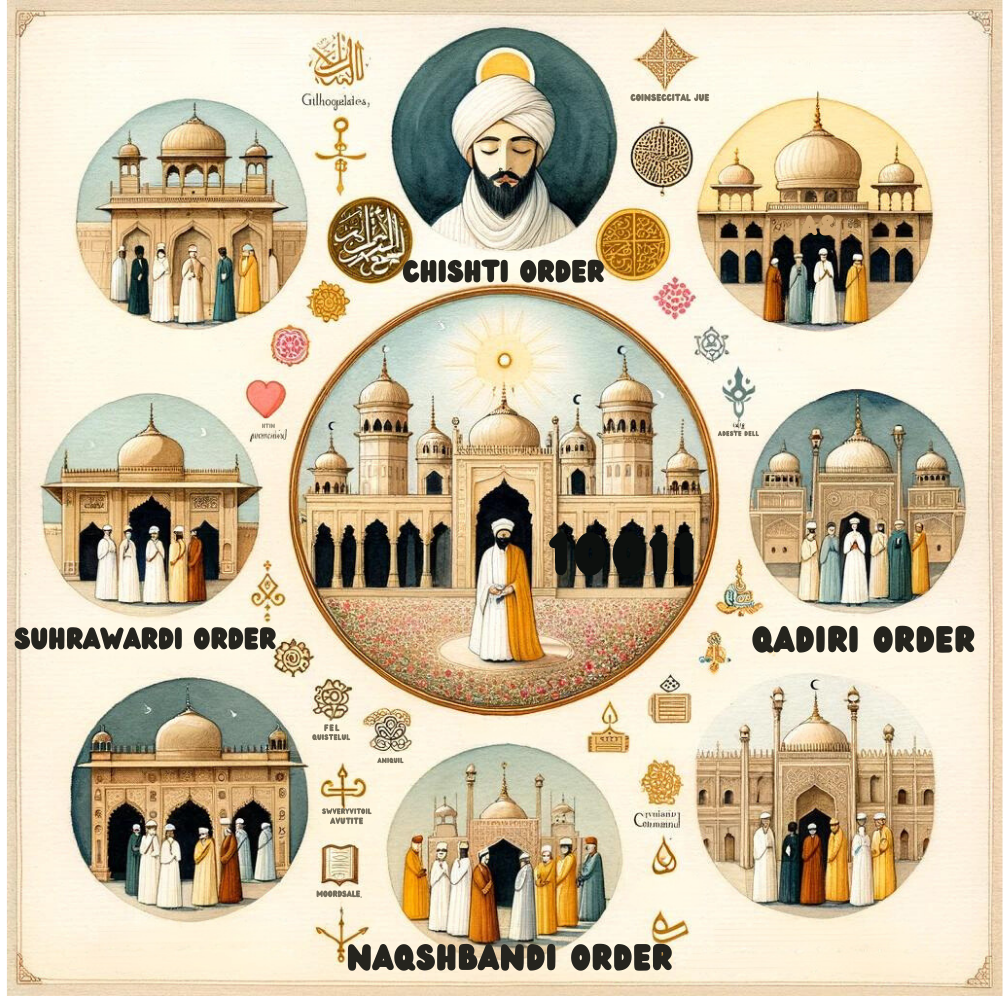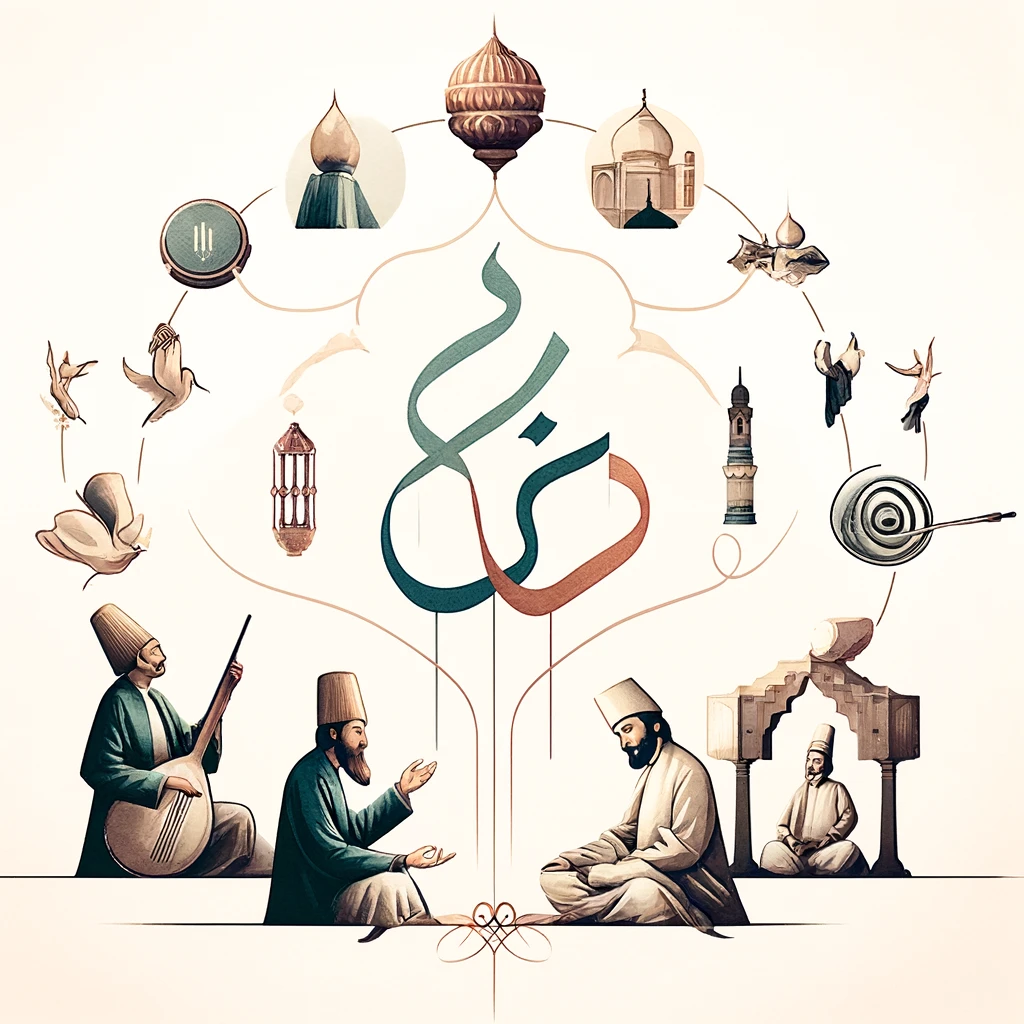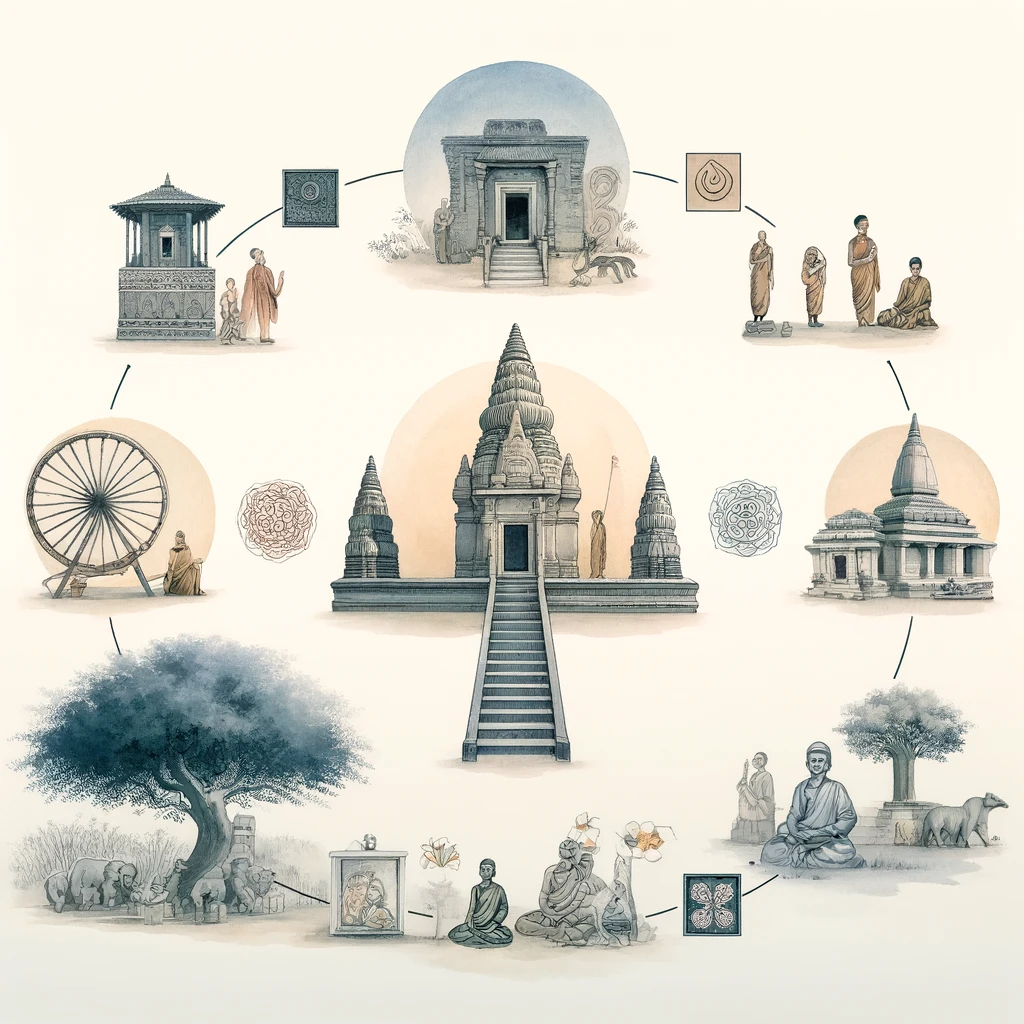Sufism, the mystical branch of Islam, played a crucial role in the cultural and social landscape of India. The spread of Sufi movements in India, particularly during the medieval period, marked a significant phase in the development of Indian society. The teachings and practices of prominent Sufi saints like Khwaja Moinuddin Chishti fostered a syncretic culture that bridged diverse communities and religious traditions. This article delves into the spread of Sufism in India, the contributions of key Sufi saints, and the syncretic culture they promoted.

Spread of Sufism in India
Early Arrival and Establishment
Sufism arrived in India around the 12th century, primarily through the efforts of itinerant Sufi saints and traders from Central Asia and the Middle East. The Sufi movement gained momentum with the establishment of the Delhi Sultanate in the 13th century, which provided a conducive environment for the growth of Sufi orders (silsilahs).
Major Sufi Orders
Several Sufi orders established their presence in India, each contributing uniquely to the spiritual and social fabric of the region:
- Chishti Order: Known for its focus on love, tolerance, and openness, the Chishti Order became one of the most influential Sufi orders in India. Founded by Khwaja Moinuddin Chishti in Ajmer, it emphasized the importance of devotion (ishq) and the service of humanity.
- Suhrawardi Order: This order, founded by Baha-ud-din Zakariya in Multan, emphasized a more structured and legalistic approach to Sufism. It gained patronage from the ruling elites and played a significant role in spreading Islamic teachings.
- Qadiri Order: Introduced by Syed Ghaus Ali Shah, the Qadiri order focused on personal piety and the pursuit of divine love through strict adherence to Islamic law.
- Naqshbandi Order: This order stressed the inward focus and silent remembrance of God. It was particularly influential in the Mughal courts and played a significant role in political and religious matters.

Contributions of Prominent Sufi Saints
Khwaja Moinuddin Chishti
Khwaja Moinuddin Chishti (1141–1236), also known as Gharib Nawaz (Benefactor of the Poor), is one of the most revered Sufi saints in India. His dargah (tomb) in Ajmer is a major pilgrimage site for people of all faiths. His teachings emphasized:
- Universal Love and Brotherhood: Khwaja Moinuddin preached love for all humanity, regardless of caste, creed, or religion. His message of universal brotherhood resonated with the masses.
- Service to Humanity: He believed in serving the needy and the poor, reflecting the core Sufi principles of compassion and charity.
Sheikh Nizamuddin Auliya
Another prominent Sufi saint, Sheikh Nizamuddin Auliya (1238–1325) of the Chishti order, significantly influenced Delhi and its surroundings. Known for his humility and spiritual wisdom, he:
- Promoted Syncretism: His teachings and practices encouraged harmony between Hindus and Muslims. He was known to engage with people of various faiths and social backgrounds.
- Literary Contributions: His disciple, Amir Khusro, was a legendary poet and musician who played a key role in developing Hindustani classical music and the Persian and Urdu literary traditions.
Baba Farid
Baba Farid (1173-1266), a Sufi saint from Punjab, is celebrated for his ascetic lifestyle and profound spiritual insights. His teachings focused on:
- Spiritual Discipline: Emphasizing the importance of self-control, meditation, and remembrance of God.
- Cultural Integration: His works and sayings are integral to Punjabi literature and culture, symbolizing the syncretic nature of Sufism.
Syncretic Culture Promoted by Sufism
Integration of Local Traditions
Sufism in India is notable for its adaptation to and integration with local cultural and religious traditions. Sufi saints often adopted local languages, customs, and practices to make their teachings more accessible to the common people. This approach helped in:
- Bridging Religious Divides: Sufi practices often incorporated elements from Hinduism and other local faiths, fostering a spirit of religious tolerance and mutual respect.
- Festivals and Rituals: Many Sufi shrines became centers for local festivals and rituals, drawing participants from diverse communities and contributing to a shared cultural heritage.
Influence on Arts and Music
Sufi movements had a profound impact on the arts, particularly music and literature. The tradition of qawwali, a form of devotional music, became popular in India due to Sufi influence. Sufi poetry, rich with themes of divine love and mysticism, enriched the literary landscape.
- Qawwali: Initiated by Amir Khusro, qawwali became a powerful medium for expressing Sufi devotion and philosophy. Its rhythmic and melodic structure appealed to a wide audience, transcending religious boundaries.
- Literary Works: Sufi poets like Rumi, Hafiz, and Bulleh Shah have left a lasting legacy in Indian literature. Their works, translated and adapted into local languages, continue to inspire spiritual seekers.

Conclusion
The Sufi movements in India, through the contributions of saints like Khwaja Moinuddin Chishti, Sheikh Nizamuddin Auliya, and Baba Farid. They played a crucial role in shaping the spiritual and cultural ethos of the region. By promoting a syncretic culture that embraced diversity and fostered mutual respect, Sufism contributed significantly to the social and religious harmony in India. The legacy of Sufism, with its emphasis on love, compassion, and service, continues to resonate in contemporary Indian society.


